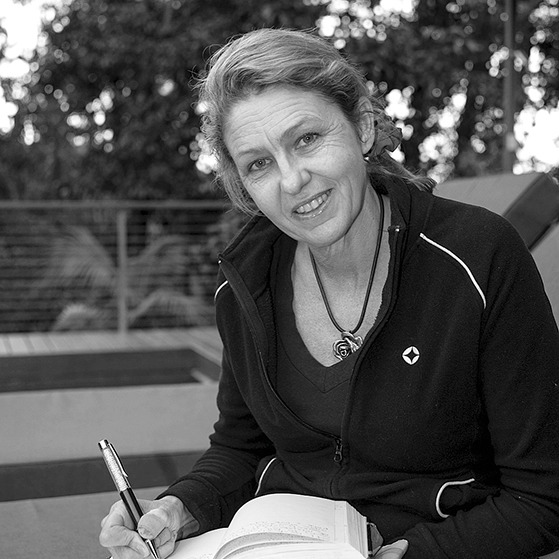Each month, our intrepid traveling duo Stephanie Brookes, Writer and David Metcalf, Photographer set off to explore some of the lesser-known enclaves of Indonesia and bring back tales of hidden heritage and culture. Over the last 12 months, NOW! Jakarta magazine has covered unique festivals and celebrations of some of the diverse cultures that make up this archipelago, which encompasses more than 700 spoken languages and over 300 ethnic groups. Here are a few highlights from 2016.
Muna Island, Sulawesi
Muna is an island steeped in history, which tells of the strong relationship of locals with horses. Evidence of this can be seen in some of the caves just 1.5 hours out of Raha, the main town, at a small village called Bolo. The caves are 39,500 years old and house some of the oldest cave drawings in the world. Through the drawings etched on ancient rock walls, stories of Muna are indelibly imprinted in time.
Today, the ritual practice of stallion fighting is still part of life in Muna. In the words of Fernandes, a local, “Muna culture is a proud one, and stallion fighting means more to us than meets the eye. Stallion fighting represents a show of masculine virility in a fight over a woman. The winner acquires prestige and a higher stratification. The fighting is also seen as a symbol of government, toughness and authority along with good governance. Through it, we pay homage to the tribal ancestors. Besides all that, everyone loves a good horse fight”.
Muna or Wuna people are the indigenous group on Muna Island, Southeast Sulawesi.
Mantarara Village, Taliabu Island, Maluku
Sea journeys in remote regions offer the opportunity for adventure, and travelling to the isolated village of Mantarara on Taliabu Island was a wonderful travel experience.
We were in the Maluku Island chain, the birthplace of the original Cakalele dance. The sound of the ancient gong called the two warriors to the stage. This was no ordinary stage: we were on the beach. As the hot sun scorched our bare feet, the children excitedly scrambled from their humble dwellings and jostled for position on a piece of driftwood conveniently lodged in the sand to watch the performance. As the sound waves from the giant gong reverberated through the village, the ocean waves joined the call and the mock battle began under the intense heat of the day. The two proud young men dressed in ceremonial red garb started their war dance against a perfect backdrop of crystal clear ocean waters. With parang (sword) in one hand and salawku (shield) in the other, they showed off their skills and bravery in front of the ever-expanding group of enthusiastic onlookers gathered in a semi-circle on the beach.
This island was once part of the sultanates of North Maluku. The original inhabitants, the Kadai tribe, came down from the interior to settle in this coastal village in about 1921. The village now has a cultural mix of several ethnicities including Kadai, Bugis, Papuan, and Makassarese.
Tumbung Manggu Village, Central Kalimantan
In the small remote village of Tumbung Manggu, Central Kalimantan an ancient customary death ceremony, a Tiwah, was about to begin. The last time a Tiwah was held in this village was twenty-five years ago. My guide had arranged for me to meet with the spiritual leader of the village, I Syaer Sua, who told me, “We believe in the world of spirits, and we must pay our respects and make offerings to Tatu Hiang (our ancestors) to keep them happy. We are honouring the spirits of 73 people who have passed over to the other side. Tomorrow the families will be digging up and cleaning the bones of the deceased, and they will then be placed in temporary wooden boxes before being moved to the Sandung, (bone house), where the bones will be put with those of their ancestors in a very sacred place near our village.”
Seven Basir (spiritual custodians similar to a priest) were present at this Tiwah. Their role was to communicate with Tempon Telon, a diety who watches over the souls of the dead in the next world. The Basir play a role similar to Hindu high priests in Bali. During the ceremony, they spent most of their time chanting in an ancient language called Sanging. Nobody in Tambang Manggu village understands this language, and it is unclear how the Basir came to learn it.
I was made to feel very welcome at the Tiwah and treated as an honoured guest. It was a privilege to be present at a time when the spirits were released, and to witness this important Dayak cultural ceremony.
Ngaju are an indigenous tribe from the Dayak group. Based on the river stream regions of Central Kalimantan, they number around 400,000 and speak Ngaju language.
Krogowanan Village, Central Java
In July every year an extraordinary cultural festival, the Lima Gunung Festival (Five Mountains Festival) is held in the Menoreh Highlands of Central Java. It has been running for 15 years now and the theme for this year’s festival was Pala Kependhem, which means local wisdom and spiritual values. Pak Sujono, a farmer from one of the local villages, explained, “Around 15 years ago a number of people, mostly farmers, got together from five different villages with a desire to keep our culture alive and ensure that the younger generation grew up with an understanding of and respect for their Javanese culture and history. The idea of a festival was born, but we wanted to do it in our own way. We did not approach the government, as we wanted to keep this very localised and get commitment from the local people in the villages. This festival is not about money but being proud of our culture and welcoming visitors from around Indonesia and overseas.”
Sujono explained that the local communities open their homes to participants and visitors in the spirit of Monggo Pinarak Mas, (you are very welcome here) during the five-day festival. They take great pride in providing food and lodgings, offering friendship and hospitality, with no money expected.
Javanese folklore is steeped in mysticism and belief in supernatural beings. Amongst its legendary figures are the Wali Songo, the nine holy men who brought Islam to Java. They are known for their magical powers, including flying.
Stephanie Brookes is a travel writer and blogger with tales from Indonesia and beyond.
Please see www.travelwriter.ws
Follow on www.facebook.com/stephtravelwriter
David Metcalf runs photography and cultural tours in Indonesia, Myanmar, India and USA. David operates Taksu Photo Gallery in Ubud, Bali. He supports education and health programs in Bali and Kalimantan.
www.davidmetcalfphotography.com
http://www.taksuphotogallery.com
www.instagram.com/davidmetcalfphotography
www.taksuphotogallery.com
















